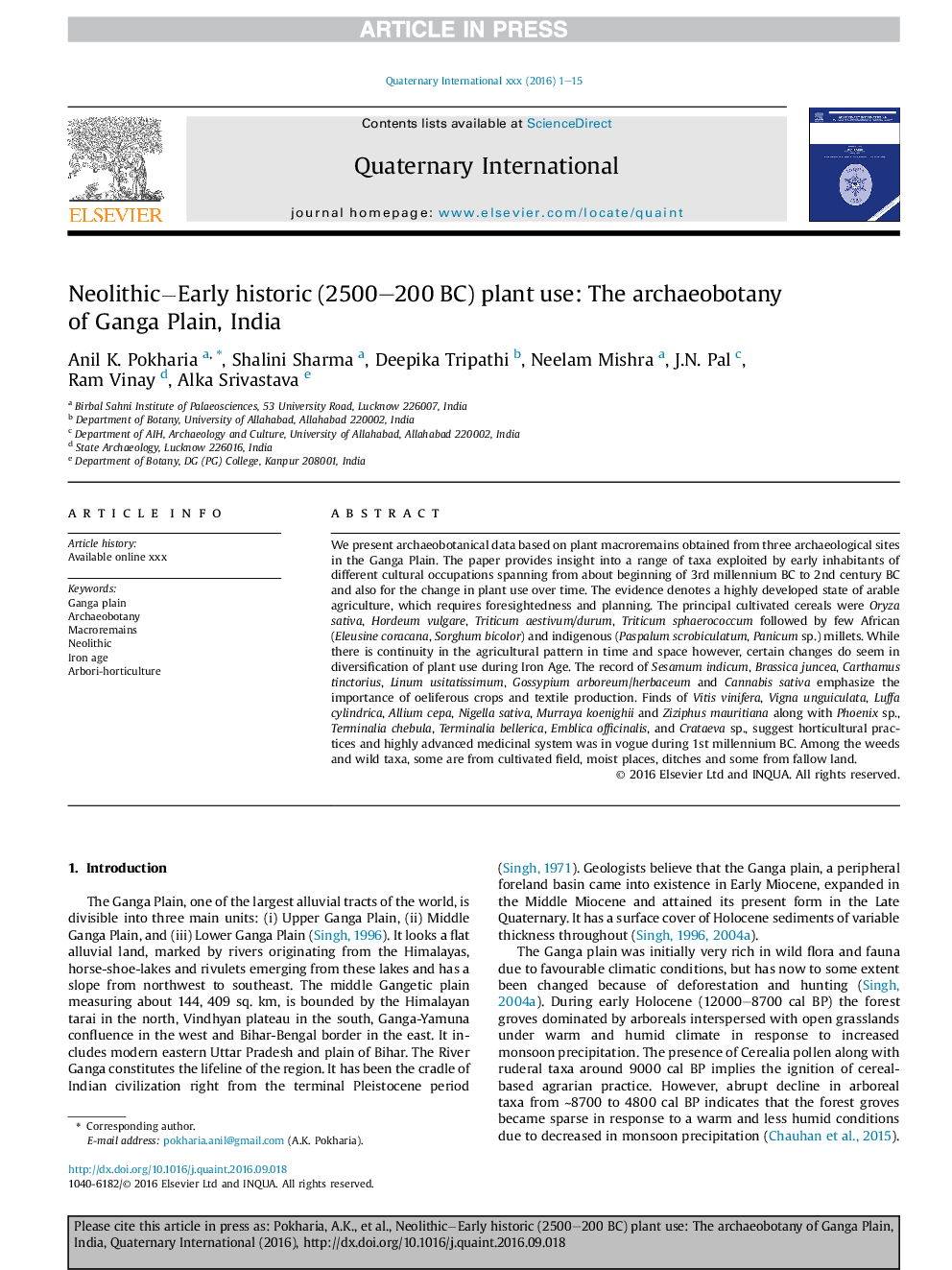| Article ID | Journal | Published Year | Pages | File Type |
|---|---|---|---|---|
| 5113141 | Quaternary International | 2017 | 15 Pages |
Abstract
We present archaeobotanical data based on plant macroremains obtained from three archaeological sites in the Ganga Plain. The paper provides insight into a range of taxa exploited by early inhabitants of different cultural occupations spanning from about beginning of 3rd millennium BC to 2nd century BC and also for the change in plant use over time. The evidence denotes a highly developed state of arable agriculture, which requires foresightedness and planning. The principal cultivated cereals were Oryza sativa, Hordeum vulgare, Triticum aestivum/durum, Triticum sphaerococcum followed by few African (Eleusine coracana, Sorghum bicolor) and indigenous (Paspalum scrobiculatum, Panicum sp.) millets. While there is continuity in the agricultural pattern in time and space however, certain changes do seem in diversification of plant use during Iron Age. The record of Sesamum indicum, Brassica juncea, Carthamus tinctorius, Linum usitatissimum, Gossypium arboreum/herbaceum and Cannabis sativa emphasize the importance of oeliferous crops and textile production. Finds of Vitis vinifera, Vigna unguiculata, Luffa cylindrica, Allium cepa, Nigella sativa, Murraya koenighii and Ziziphus mauritiana along with Phoenix sp., Terminalia chebula, Terminalia bellerica, Emblica officinalis, and Crataeva sp., suggest horticultural practices and highly advanced medicinal system was in vogue during 1st millennium BC. Among the weeds and wild taxa, some are from cultivated field, moist places, ditches and some from fallow land.
Related Topics
Physical Sciences and Engineering
Earth and Planetary Sciences
Geology
Authors
Anil K. Pokharia, Shalini Sharma, Deepika Tripathi, Neelam Mishra, J.N. Pal, Ram Vinay, Alka Srivastava,
